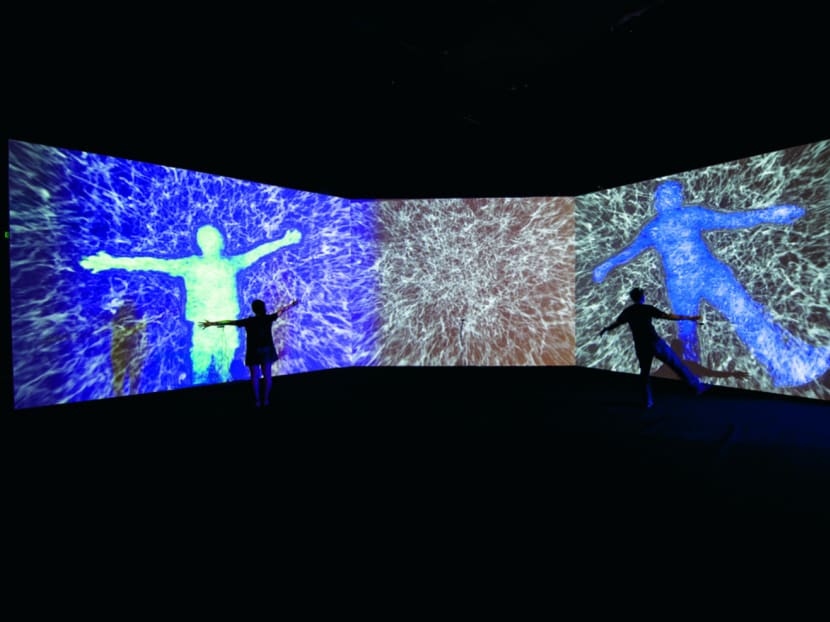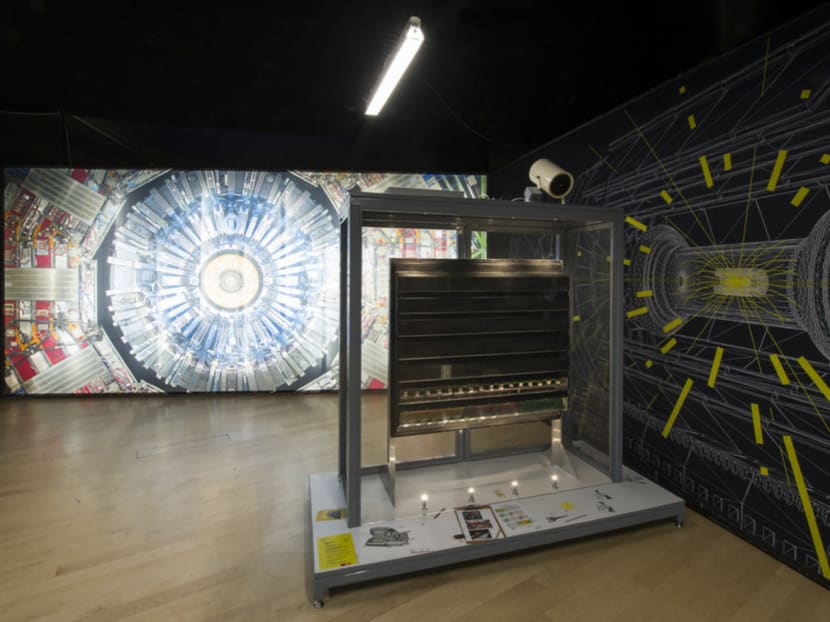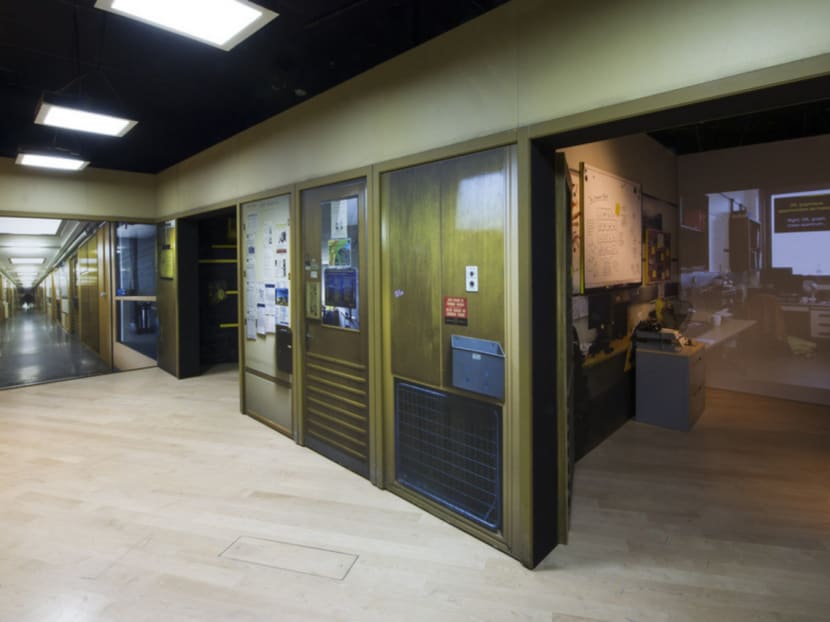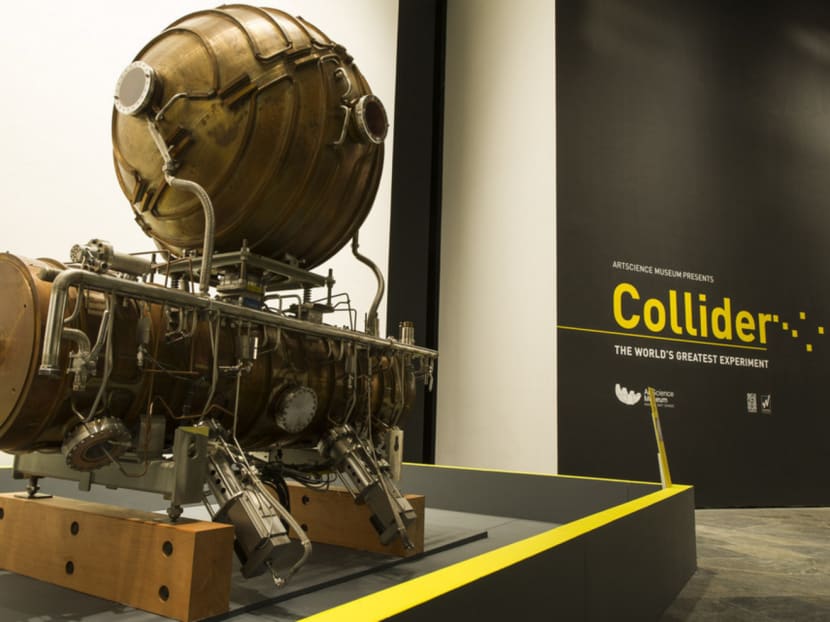Art and science collide in award-winning exhibition
SINGAPORE — “By the time you have read this sentence, a particle in the Large Hadron Collider (LHC) could have travelled around the world 30 times.” Emblazoned on posters all around Marina Bay Sands, that is just one of the intriguing facts that will lure both science geeks and laymen alike to Collider, the award-winning exhibition at ArtScience Museum.




SINGAPORE — “By the time you have read this sentence, a particle in the Large Hadron Collider (LHC) could have travelled around the world 30 times.” Emblazoned on posters all around Marina Bay Sands, that is just one of the intriguing facts that will lure both science geeks and laymen alike to Collider, the award-winning exhibition at ArtScience Museum.
Coming from the renowned Science Museum in London, Collider is an immersive experience with specially designed soundscape and video art that allow visitors to explore the biggest physics experiment in the world. The exhibition is a graphic journey into the heart of the 27km circular underground tunnel that is the Large Hadron Collider (LHC) — the world’s most fascinating science experiment — recreated from the actual underground site of CERN (European Organisation for Nuclear Research) in Geneva. It shows how new particles are created when protons crash into each other at 99.9999991 per cent of the speed of light.
Visitors will encounter actual objects, as well as real physicists and engineers at the CERN office through video projections and audio interviews played at various spaces across eight “zones”.
There are also 270-degree projection screens to explain what the LHC has discovered so far, starting with a film featuring the now famous auditorium scene, which made the headlines in 2012 when the discovery of a particle consistent with the Higgs boson, which explains how matter attains its mass, was announced to the world.
There is also Gift of Mass, an interactive art installation inspired by the discovery of the Higgs boson that brings to life the scientific concepts underpinning the field. Conceived a few months after the discovery, this interactive multi-screen audio-visual installation by Italian Institute of Nuclear Physics in collaboration with embrio.net collective and artist Paolo Scoppola enables visitors to personally experiment with how mass is acquired, when a particle interacts with the Higgs field. It is a representation of the interrelationship between art, science and technology, and presents a mind-blowing visitor experience of seeing oneself “dancing” with particles and interacting with the invisible matter around us. “Mixing art and science together may seem like two very different worlds. But these two very different worlds actually share a lot of connection,” said Scoppola. Executive director of ArtScience Museum Honor Harger agreed: “In this exhibition, art truly collides with science, and visiting it will be an unforgettable experience for audiences of all ages. This exhibition draws on new technology, theatre design and a stunning immersive set to explore some of the most fundamental scientific issues of our time.” GENEVIEVE LOH
Collider runs from Nov 14 to Feb 14 next year.







